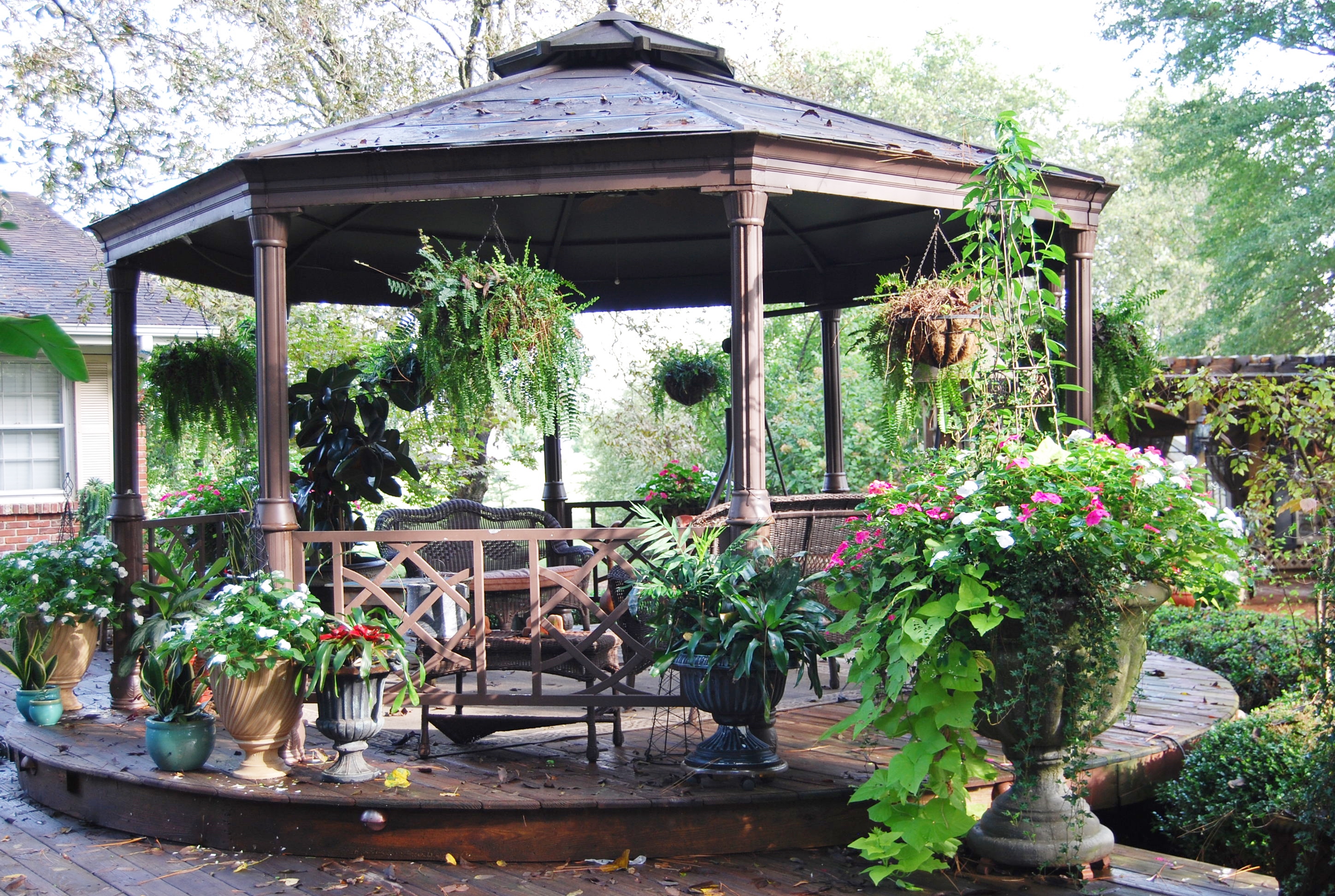Containers flank the sides of this gazebo. Planted with prolific "Marguerite' sweet potato vine and hot pink and white impatiens, they add height as well as color to the deck.
When faced with the challenges of poor soil or not having enough space for landscape plants, the answer is often a container garden.
Grouping plants together in a container, or grouping containers in one spot, is nothing new, but it is an art, and it does require some gardening knowledge.
You must know the water, light and soil requirements of each plant for your container garden to be successful. Grouping plants that like to stay dry is a sure way to kill them if planted with varieties that like frequent watering and moist soil.
You can look up your plants’ needs online, or in many books, but a good rule of thumb is to look at the leaf. The swollen leaf of a Jade plant compared to a paper-thin fern leaf makes it easy even for a novice to notice the difference. The reason the Jade plant’s leaf is so thick is because it is full of water, like a storage tank. It would take a long time for the plant to need water, since it gets it from the numerous leaves on its branches, which also hold a lot of moisture.
The leaf of the fern is so thin you would hardly think it could survive without constant rainfall. That’s not far from the truth, as most ferns grow in boggy areas or in rain forests.
These two would never make good companion plants. However, there are plenty of plants that make excellent neighbors, so do some research and find out which suits your pot, your location and your zone.
We live in Zone 7, which is very important if you intend to leave your pots outdoors during the winter months. Ivy, most bulbs, some sedums and roses will be fine in pots or hanging baskets, but you will have to bring impatiens and other tender plants inside for the winter. For that reason, you should pay particular attention to the weight of the pot you choose. A heavy ceramic or stone container will be much too heavy for most people. For plants that must be relocated, choose lightweight resin or plastic pots.
Sitting like plants together makes a bolder statement. It is also good for the plants because it creates humidity. Rex begonias look striking when kept in a grouping, and the light requirements are the same for each pot.
While not 'technically' a container, a small, narrow strip of soil between a wall and a sidewalk certainly do contain these roaming plants. Red spider lilies, or 'naked ladies' come back faithfully each year to put on this crowd-pleasing display.
An extremely large cabbage head growing in a garden urn looks very compelling to visitors. It gives a unique perspective to 'container gardening,' which can easily turn into a vegetable container garden by adding a few companion plants.
A large concrete container situated in the middle of a long narrow flower bed becomes a focal point near a driveway. It also adds height, almost giving the container a 3-D effect.
Containers flanking the sides of a gazebo should match one another as much as possible to give balance to your seating area. Planted with prolific "Marguerite' sweet potato vine and hot pink and white impatiens, they add height as well as color to a deck.
You can also plant single succulents in an unusual container to make a great focal point that can be moved from place to place with ease. That is another important consideration: some plants can take spring sun, but when the weather turns hot and dry, they might do much better in a light shade or under a porch. Moving them with ease will be much easier on you and your plant.
Think outside the box. Use outdoor furniture or statuary to give added emphasis, allowing your succulent dish garden to show off its draping habit.
Dish or pot gardening is easy, once you learn the basics listed above.
Enjoy gardening!
























